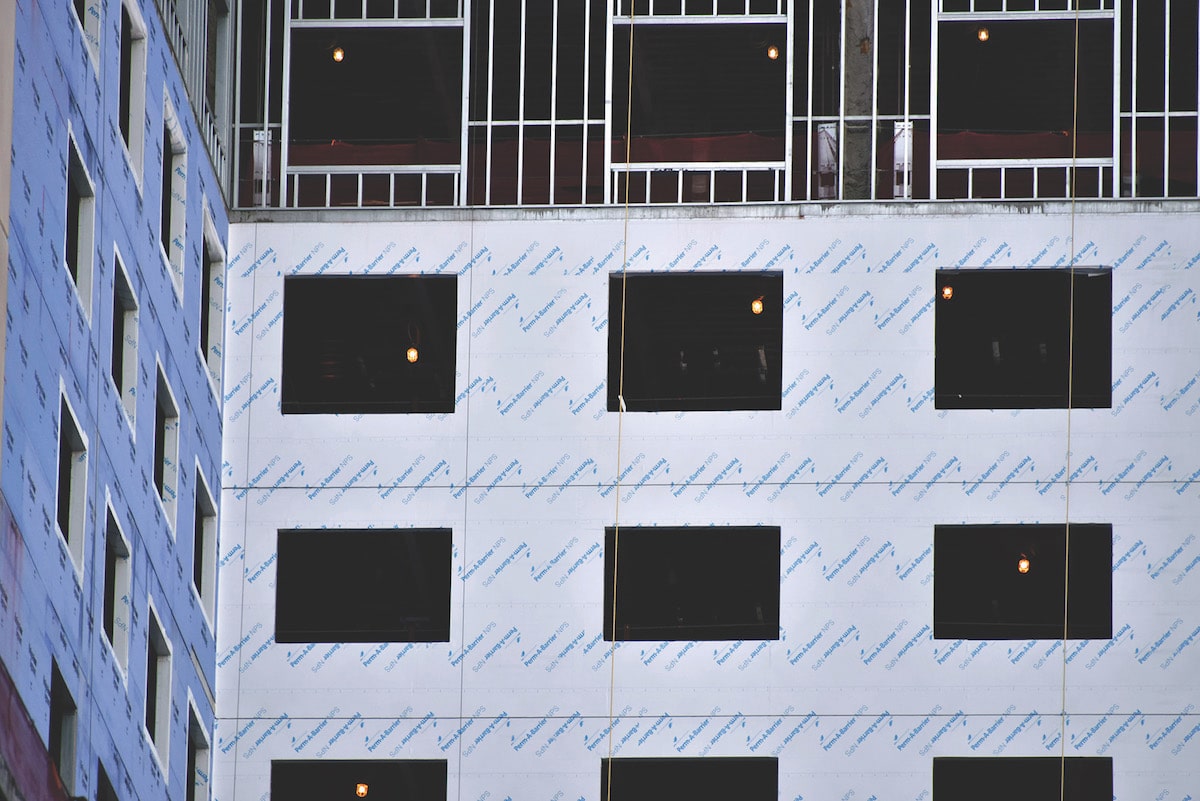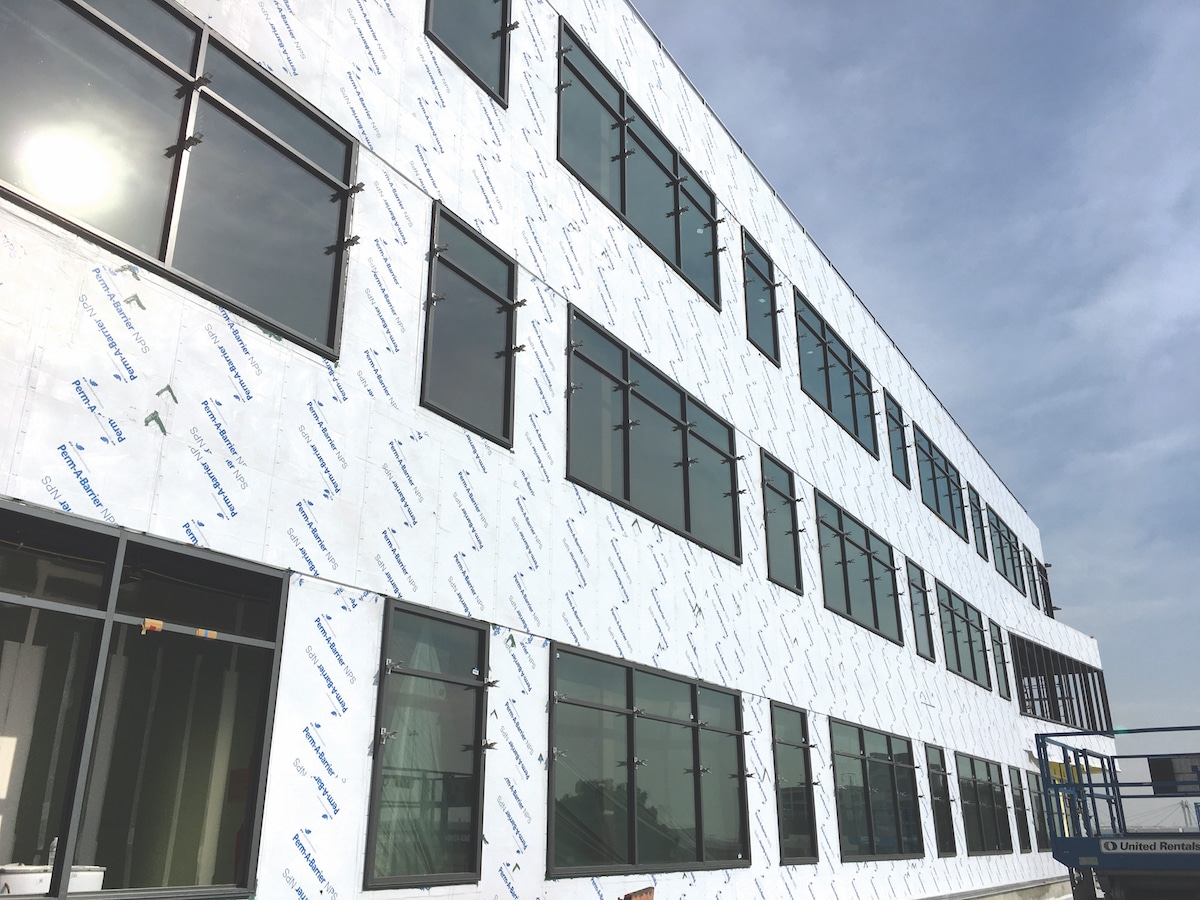
GCP’s primerless membranes are high quality, easy to use, and energy-efficient. [Photo: Courtesy of GCP]
GCP’s primerless membranes offer easy application, durable protection, and significant energy savings.
GCP Applied Technologies is no novice when it comes to developing high-performance building materials and cutting-edge technologies. The company’s products are used by customers in more than 100 countries. Based in Cambridge, Massachusetts, GCP was founded in 2016 when it spun off from W. R. Grace. The company inherited 50-plus years of experience partnering with architects, producers, builders, and contractors to provide construction products and solutions.
GCP’s portfolio of construction products and technologies includes additives for cement and concrete, the VERIFI® in-transit concrete management system, high-performance waterproofing products, and specialty systems. The company’s self-adhered PERM-A-BARRIER® NPS and PERM-A-BARRIER VPL 50 membranes stand out for their high quality, ease of use, and energy efficiency.
Here’s how you can improve your building using these PERM-A-BARRIER air barrier products.
Ease of Use
The widely applicable PERM-A-BARRIER NPS air barrier comprises a pressure-sensitive adhesive with uniform thickness that’s used to save time and money on structures ranging from skyscrapers to commercial buildings.
Unlike mechanically attached barriers, the air barrier is fully adhered to the substrate. It also requires no primer, so you don’t have to wait around for it to cure to apply the membrane. “Sometimes contractors might install primer on a whole building elevation, thinking they’re going to get that much membrane up in one day,” says Mark Franciosi, GCP’s director of technical services. “If the application doesn’t happen and the primed façade is exposed for even a short period to dusty job site conditions, re-priming may be necessary. That means additional labor and cost. Having a primerless membrane takes a significant step out of the installation process.”
If a fluid-applied barrier is preferred, the PERM-A-BARRIER VPL 50 liquid primerless air barrier is a great option. On par with the durability of sheet membranes, it’s easier to install on buildings with numerous façade obstructions and details. “As an example, very often a masonry substrate has pre-installed brick ties that secure a brick veneer,” Franciosi says. “To try to do a job like that with a sheet can be somewhat time consuming. From a labor perspective on the contractor’s side, it would make more sense to use a liquid air barrier.”

[Photo: Courtesy of GCP]
Water Resistance
Both PERM-A-BARRIER NPS and PERM-A-BARRIER VPL 50 air barriers offer unparalleled protection from rain and other moisture invasion. “Generally, any time you have air that’s moving through a wall assembly, that air is always going to have some level of moisture in it,” Franciosi says. “Because GCP’s products are excellent at controlling air leakage, they’re also highly effective at preventing moisture from accumulating in the wall assembly. Additionally, GCP’s membranes act as what Franciosi calls a “drainage plane.”
“You might have an open joint system or other exterior where you are going to have some level of water that gets through the exterior cladding and ends up at the location of the air barrier. The air barrier acts as a drainage plane, which allows the water to drain out so it doesn’t get into the exterior sheathing or the wall assembly and cause other issues such as diminished indoor air quality or mold.”
Energy Efficiency and Sustainability
To ensure its permeable and impermeable PERM-A-BARRIER membranes perform at the highest level, GCP subjects the products to extreme conditions both outdoors and in a controlled setting. Testing environments simulate extreme conditions—from brutal winters in Syracuse, New York to blazing summers in Arizona and intense fog in Scotland, according to Marysusan Couturier, principal scientist at GCP.
Couturier points to a study GCP conducted with Tennessee-based Oak Ridge National Laboratory at Syracuse University that compared GCP’s fully adhered air barriers to mechanically attached ones. That study showed fully adhered air barriers were a stunning 500% more effective at controlling air leakage. And when a wall covered in fully adhered PERM-A-BARRIER technology was exposed to the elements, including harsh winters, there was no difference in air leakage over a 16-month span. By comparison, a mechanically attached barrier had 83% more leakage after exposure than the original installed wall.
“By the nature of the air barrier, it minimizes air infiltration and exfiltration, and HVAC use goes down,” Couturier says. “Less HVAC use means significantly less energy use, less money spent on heating and cooling, and a more sustainable structure. If you plan to be in your building for a long time, using a superior air barrier like PERM-A-BARRIER NPS or PERM-A-BARRIER VPL 50 is a great choice,” Couturier says.
FROM OUR NOV+DEC 2018 ISSUE


